The colors you use when creating a painting or drawing mustn’t fade over time. The last thing you need is your diligent work to gradually fade over time because the mediums you selected had poor lightfastness ratings.
In this blog, I will share a simple test that you can do to get an idea of how your handmade colors will fare when exposed to sunlight.
What is lightfastness?
The lightfastness of paints or colorants is an attribute that determines how resistant they are to fading when exposed to light. It implies that artwork created using lightfast colours will be preserved for many years.
As light travels through the transparent layers of paint, the pigments absorb certain parts of the light spectrum and reflect the remaining parts. This causes some colors to undergo chemical modifications, fade or even a change in hue since they only absorb light at a specific wavelength. However, the effects of light on organic natural paints (lake pigments) are cumulative, so if you leave your paintings exposed to light every day, the colour will eventually fade faster than if you left them out for a short time. It is a natural process that cannot be prevented.
The lightfastness test
At its simplest, testing the lightfastness of handmade paints can be accomplished by swatching them at full strength, i.e. swatching a sample of paint that is not watery but has a consistency of honey (in duplicate). Expose one-half of the paint swatch behind a window that provides as much sunlight as possible while keeping the other half shielded from all light sources.
A good indicator of how the paint will hold up after years of hanging on a wall, out of direct sunlight, is the colour change of the paint swatches compared to the sample that was shielded over several days or months.
This method has a limitation, unlike the tests performed by commercial paint manufacturers, that it is difficult to obtain repeatable test results because of daily, seasonal, and annual variations in the amount and duration of sunlight entering a specific window. However, this test still gives us a good idea of how lightfast handmade paints are.
A couple of facts that should be taken into account about lightfastness.
- Paints made from pigments are overall more lightfast than dyes.
- Most paints made from pigments extracted from natural dyes fade when exposed to sunlight. However, there are a few exceptions where some plant pigments are not fugitive or photosensitive.
The lightfastness test experiment set-up
On 100% cotton watercolour paper, I painted the lake pigment swatches in duplicate. One-half of the lake pigment swatches were covered with a heavy-weight black paper strip to block the light. You can also paint swatches on separate sheets of paper and keep one half in a drawer or somewhere where no light can reach while exposing the other half to sunlight.
The panel below shows how I set up a basic lightfast test for the lake pigments made in my online “Botanical Lake Pigments” class.
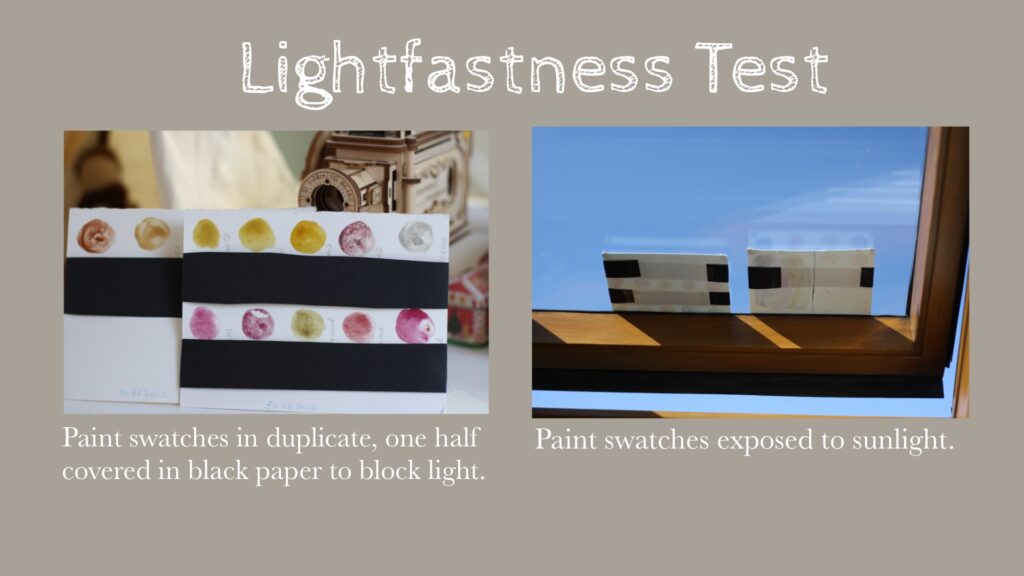
The basic setup for the lightfastness test
Test results after six-weeks
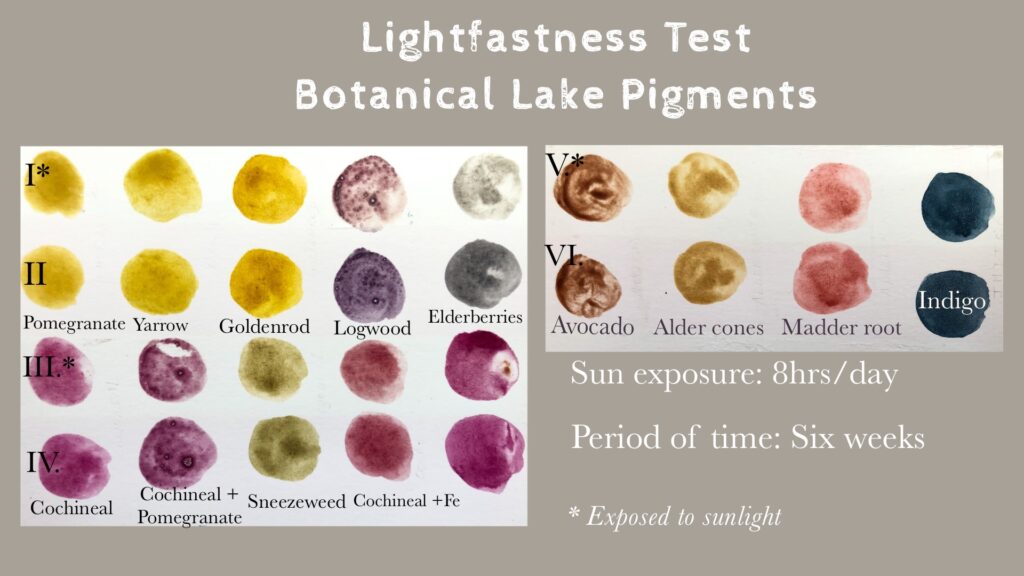
Lake pigments derived from logwood and elderberries fade strongly on full sun exposure. However, lake pigment derived from sneezeweed fades lightly. No significant change was observed in the intensity of the lake pigments derived from madder root, indigo, cochineal, avocado, alder cones, pomegranate, yarrow and goldenrod.
This test aimed to determine if the colour would change or deteriorate even if the paint was protected from the sun by a dark cover. As observed, there is a significant change in the color of the lake pigments derived from logwood and elderberries. The colour of the elderberries also changed in the half-covered with a black paper strip indicating that the color is probably heat sensitive too. No significant change was observed in the color of the remaining lake pigments.
Poor light fastness and degradation of some of the lake pigments are attributable to photooxidation of the chromophores. It is an unavoidable natural process that serves as a reminder of how lovely and fleeting nature is!
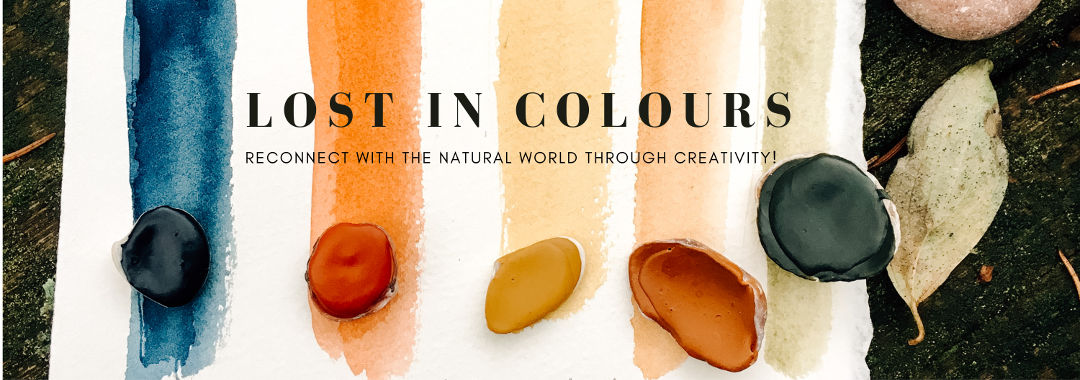
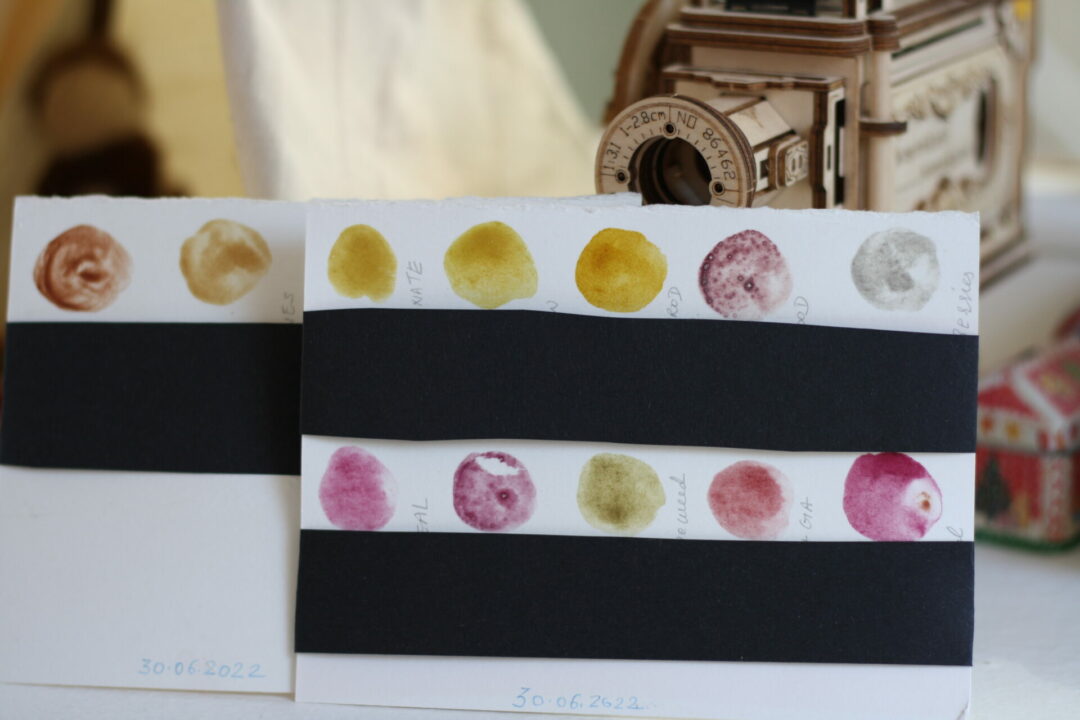
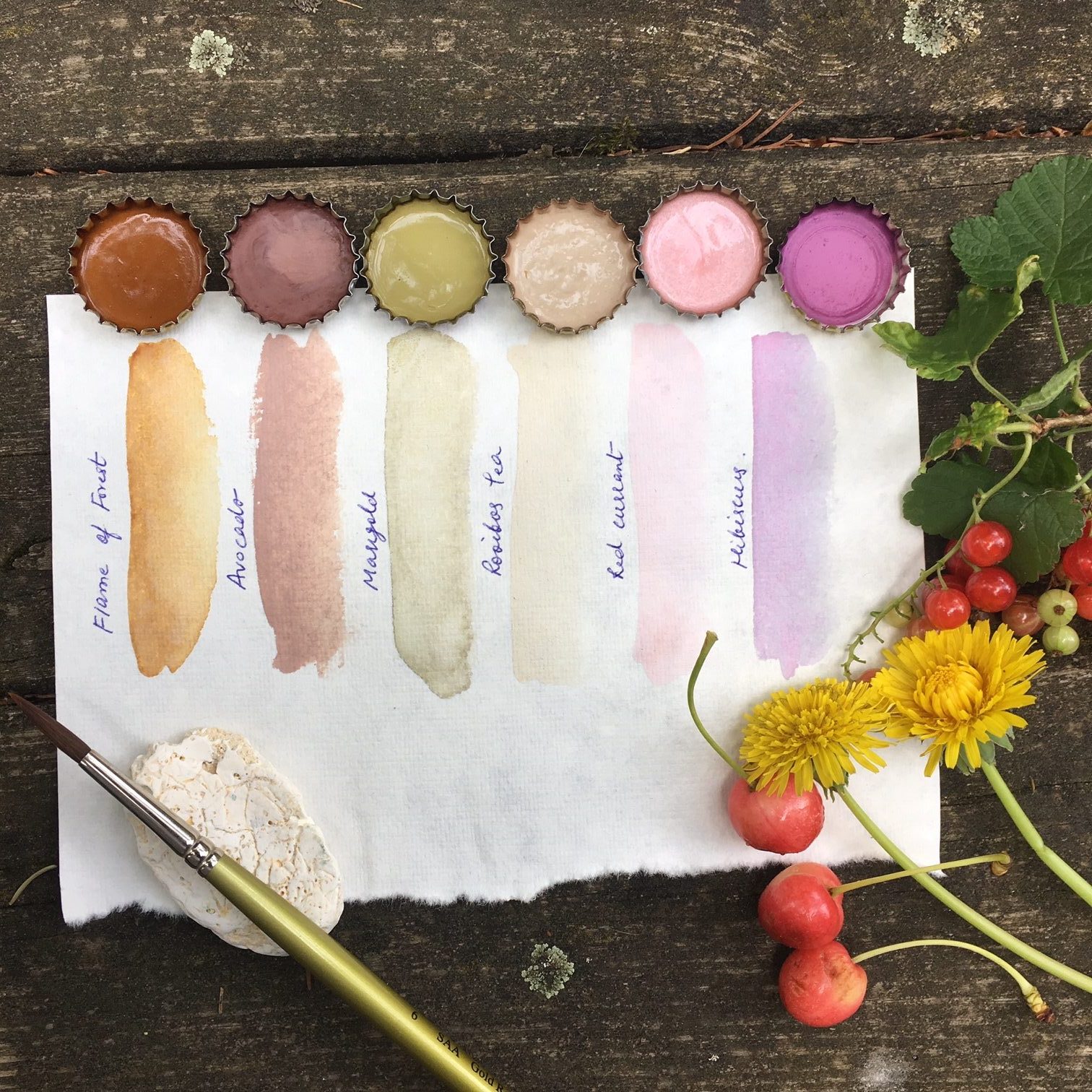
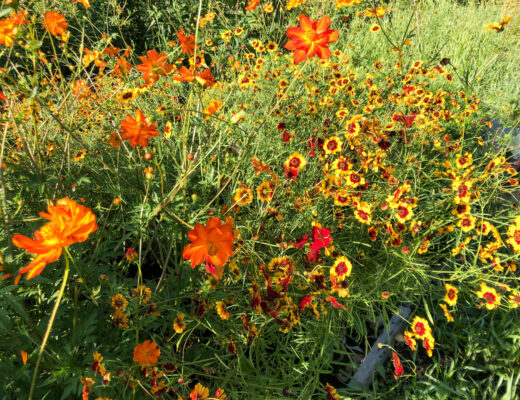
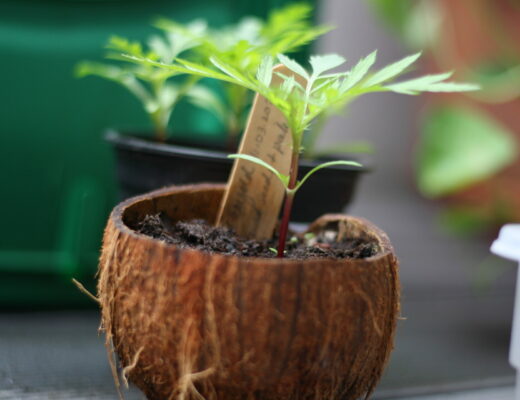
No Comments